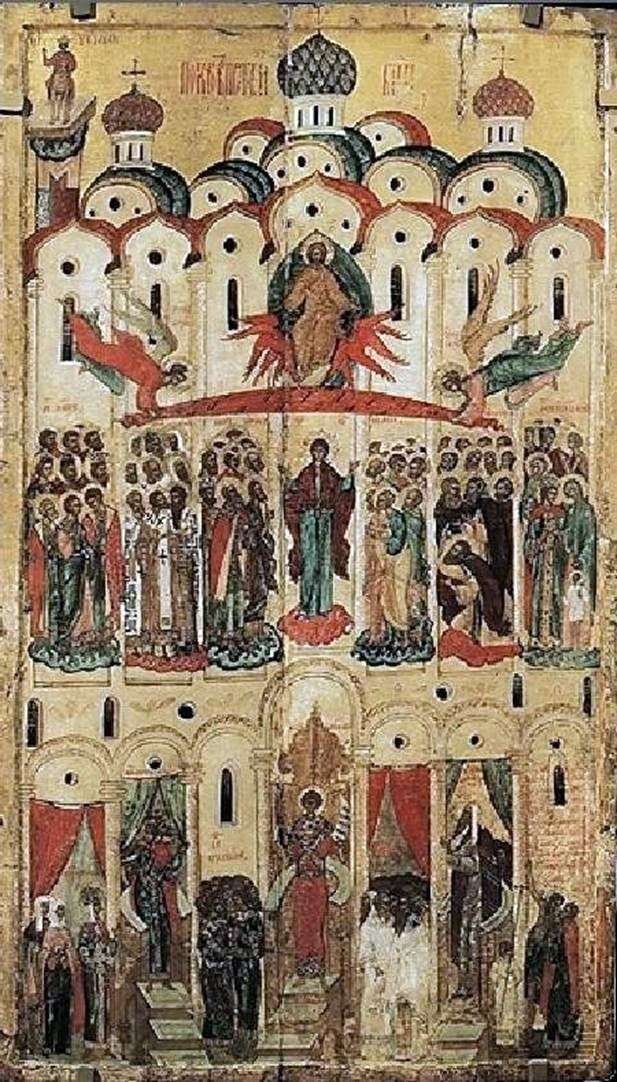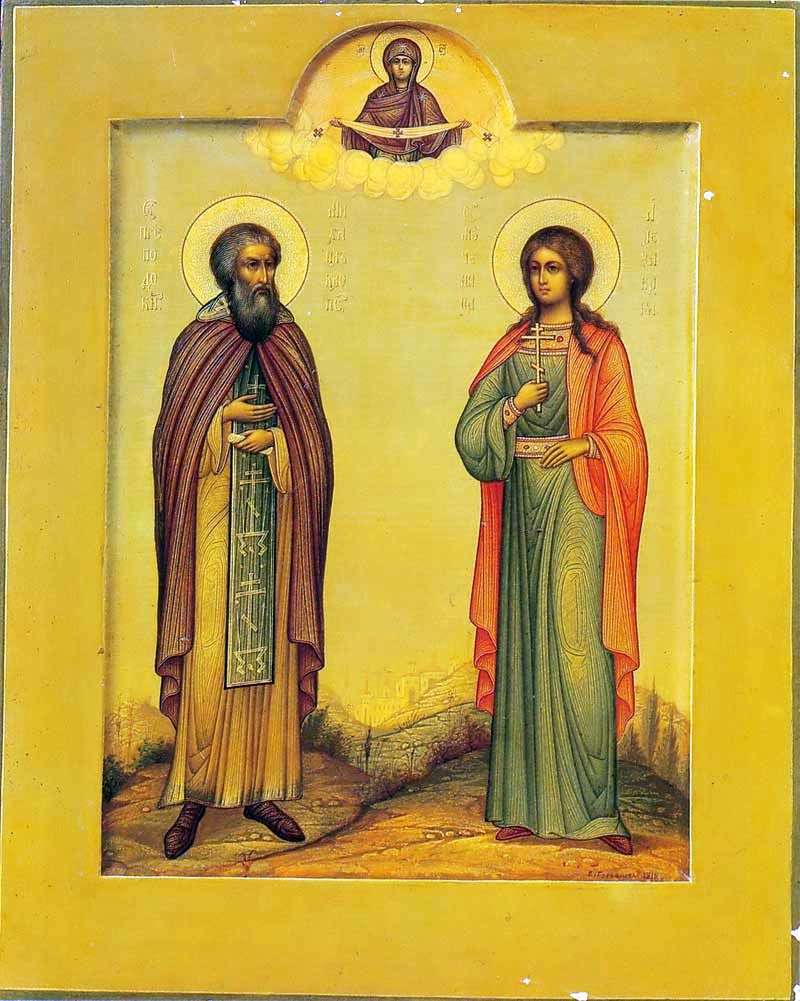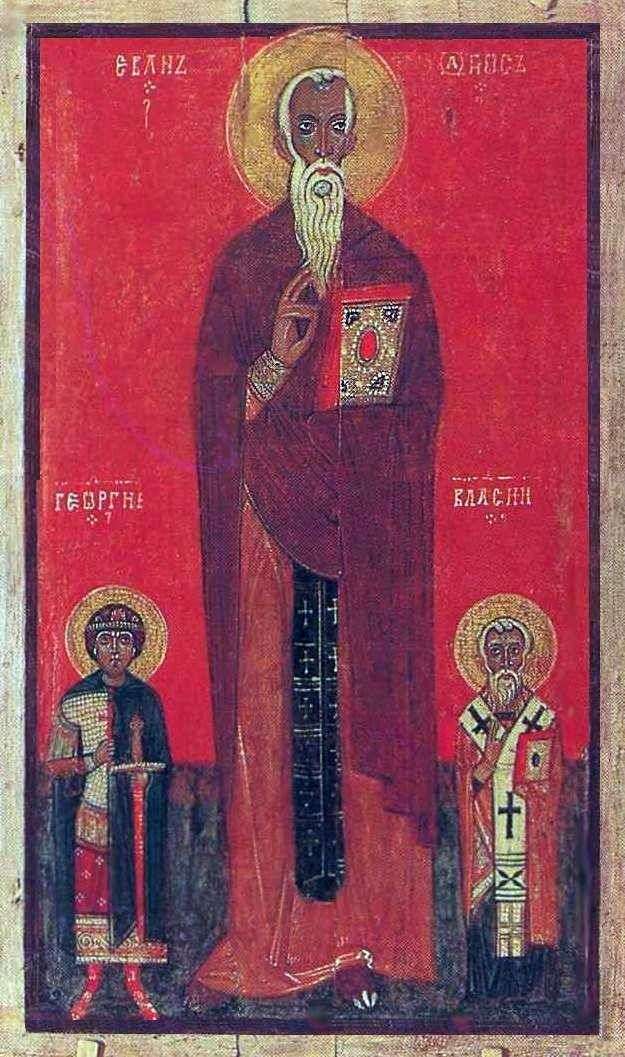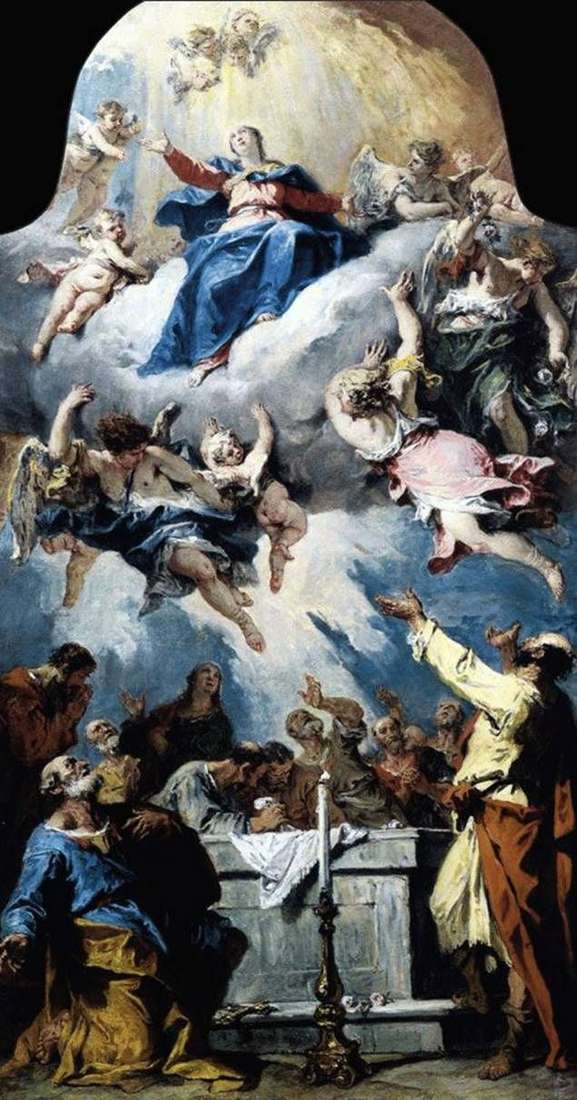
Novgorod. The plot of the icon is based on the text of the Life of St. Andrew the Godfather and tells about the vision of the Virgin in the Vlaherna church in Constantinople, where, according to legend, the Robe of the Virgin was kept. The Virgin, accompanied by John the Theologian and John the Baptist, prayed before the altar, and then, taking off the maforium, she stretched it over the people standing in the temple.
The creation of the icon composition was probably influenced by the ritual that took place in the church of Vlakhern, the removal of the cover over the icon of the Mother of God, which was known to Russian pilgrims as early as the 12th century. In Russia in the 60 years of the XII century. During the Vladimir prince Andrei Bogolyubsky, the Feast of the Intercession was celebrated, which was celebrated on October 1 and reflected the cult of the Robe of Our Lady.
The composition of the icon is deployed against the backdrop of the multi-headed church. The Virgin in the Oranta pose is represented in the central apse, above it are two soaring archangels – Michael and Gabriel – holding the veil over which Christ sat in the almond-shaped mandorla on fire seraphim. In the lower register of the icon, the three chairs depict the creator of the Virgin hymns, the Roman Sladkopevets, the king Leo the Wise and the patriarch Tarasy. In the right corner of the icon are witnesses to the vision of Blessed Andrew and his disciple Epiphanius.
 The Mother of God of Arabia (Arapetskaya, or “O, All-Made Mother”)
The Mother of God of Arabia (Arapetskaya, or “O, All-Made Mother”) The Mother of God &; “Quench My Sorrows”, with the four saints on the fields
The Mother of God &; “Quench My Sorrows”, with the four saints on the fields The Monk Mikhail Klopsky and the Holy Martyr Alexandra
The Monk Mikhail Klopsky and the Holy Martyr Alexandra Introduction to the Temple
Introduction to the Temple St. Nicholas the Wonderworker, with a life in 16 hallmarks
St. Nicholas the Wonderworker, with a life in 16 hallmarks John the Theologian and Prokhor
John the Theologian and Prokhor John Climacus, George and Blasius
John Climacus, George and Blasius The Assumption by Sebastiano Ricci
The Assumption by Sebastiano Ricci